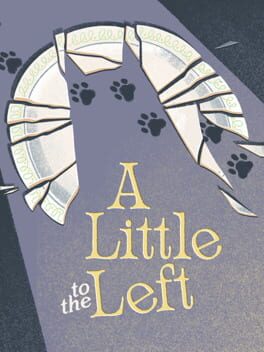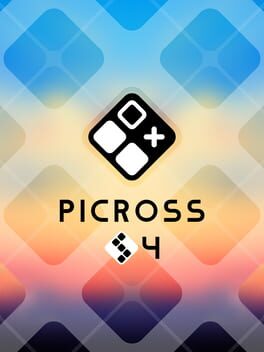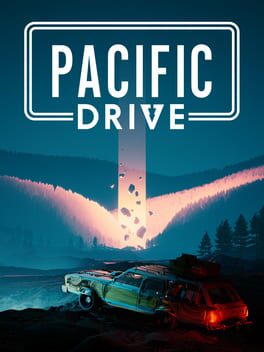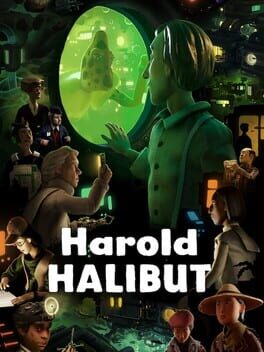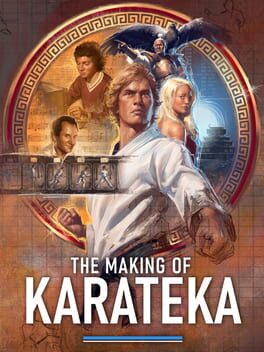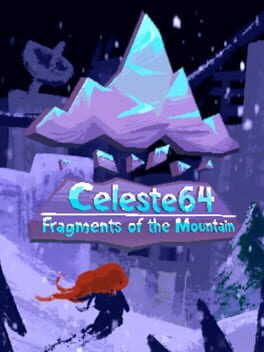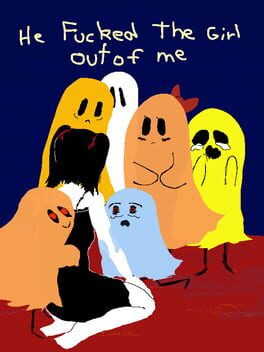humantree
BACKER
2024
Once I started playing Animal Well, my next week was dedicated to it. I simply couldn't stop playing it. At a surface level its audio and visuals instantly hooked me. Its neon-tinged cave seeming cozy yet foreboding; its delightful sounds already laying the groundwork for Fez comparisons. Seconds into playing it I could feel all the attention to detail that went into every animation and effect. As I collected items and realized they were all toys, and saw their unique physics interactions, I was filled with joy for multiple reasons.
After hitting credits once, I immediately kept playing, continuing my egg hunt. I can be somewhat hasty in games filled with secrets to give in to external hints too quickly (see my Void Stranger review), but I was determined here to hold out as long as I could. Time and time again I felt so much satisfaction as I found more hidden eggs, until finally my collection was complete. I should also say that this sense of satisfaction also happened during the main playthrough of the game multiple times as well. This sense of discovery is truly something Animal Well excels at.
Though the game requires a lot of backtracking to try to recontextualize places to reveal secrets, I always found myself happy to return to the search, because I kept feeling rewarded for it. I find this quite a triumph, as I know that I could just as easily have considered this lazy padding in a game where it wasn't as well executed. The fact that it kept me running around its map, convinced I would be able to discover its secrets on my own, and entertained all the while, is really the highest praise I can give it.
After hitting credits once, I immediately kept playing, continuing my egg hunt. I can be somewhat hasty in games filled with secrets to give in to external hints too quickly (see my Void Stranger review), but I was determined here to hold out as long as I could. Time and time again I felt so much satisfaction as I found more hidden eggs, until finally my collection was complete. I should also say that this sense of satisfaction also happened during the main playthrough of the game multiple times as well. This sense of discovery is truly something Animal Well excels at.
Though the game requires a lot of backtracking to try to recontextualize places to reveal secrets, I always found myself happy to return to the search, because I kept feeling rewarded for it. I find this quite a triumph, as I know that I could just as easily have considered this lazy padding in a game where it wasn't as well executed. The fact that it kept me running around its map, convinced I would be able to discover its secrets on my own, and entertained all the while, is really the highest praise I can give it.
2024
A religious, philosophical discussion with cinematography that reminded me of Yorgos Lanthimos. It gets weird at times, but I honestly wish it got a bit weirder. The puzzle design feels quite dated, being somehow both quite simplistic but also frustrating with a lack of feedback at times, but they don't take up too much of the game's short playtime.
I switched the audio language over to Russian early on and really enjoyed the performances. The story had some interesting thoughts, and I never quite felt it becoming pretentious, which is a concern with material like this. A good quick game.
I switched the audio language over to Russian early on and really enjoyed the performances. The story had some interesting thoughts, and I never quite felt it becoming pretentious, which is a concern with material like this. A good quick game.
My first play through of Tokimeki Memorial was a disaster. I completely failed to understand the bomb mechanic, instead focusing solely on Shiori Fujisaki (as common sense would dictate), while also overlooking the importance of the physical appearance attribute. My last year of school consistent of "dates" where girls would show up before immediately leaving without saying a single word, just so that I could return home and hear a bomb explode.
One Action Button video later, I decided I would try again. Embracing the bomb mechanic and round-robin dating various girls lead to a much better experience. Though no girl can compare to Shiori, the game does a great job of letting you discover each girl's personality, and there's a bounty of bonus scenes to stumble upon as the dates progress.
I even found my opinions of the girls changing as I came to learn more about them. Ayako Katagiri seemed rather boring to me at first, as she was disinterested in all of our initial dates, but later on we found our groove, and she became my favourite girl (after Shiori, of course).
But here lies my problem, because by the end of the game I had multiple girls blushing at me, and even though I would go out of my way to pick dumb conversation options with most of them, and pick the best options with Katagiri, the game refused to pair me up with Katagiri at the end. Not as deflating an ending as my first play through, but still not a satisfying one.
Maybe one day I'll do another play through and see what other girls and scenes I can discover, but with the information that the game hides from you about how it's going to resolve at the end, it makes it a harder proposition to consider.
One Action Button video later, I decided I would try again. Embracing the bomb mechanic and round-robin dating various girls lead to a much better experience. Though no girl can compare to Shiori, the game does a great job of letting you discover each girl's personality, and there's a bounty of bonus scenes to stumble upon as the dates progress.
I even found my opinions of the girls changing as I came to learn more about them. Ayako Katagiri seemed rather boring to me at first, as she was disinterested in all of our initial dates, but later on we found our groove, and she became my favourite girl (after Shiori, of course).
But here lies my problem, because by the end of the game I had multiple girls blushing at me, and even though I would go out of my way to pick dumb conversation options with most of them, and pick the best options with Katagiri, the game refused to pair me up with Katagiri at the end. Not as deflating an ending as my first play through, but still not a satisfying one.
Maybe one day I'll do another play through and see what other girls and scenes I can discover, but with the information that the game hides from you about how it's going to resolve at the end, it makes it a harder proposition to consider.
2022
A good collection of puzzles that are largely based around ordering or arranging everyday objects. Every now and then, particularly later in the game, it seemed to lose sight of this core theme, and the puzzles would get more abstract. Sometimes these could be fun, but just as often they were simply less satisfying to solve than the organisational puzzles, which typically had better feedback too.
The audio and visual design everywhere is excellent, with some great touches in places like the chapter transitions. It was a fun package to play through over a handful of days, I just wish it stayed more focused on its strong suit.
The audio and visual design everywhere is excellent, with some great touches in places like the chapter transitions. It was a fun package to play through over a handful of days, I just wish it stayed more focused on its strong suit.
2020
2024
I think this is the first survival-crafting game I've played, so there may have been a learning curve here for me that other players could have skipped. It took me a few runs to see the loop of looting and repairing your car fully set in, but once I fully understood it I think that was the point where I began to lose interest with the game. I never really felt much sense of satisfaction when I completed a run, and I was especially annoyed when I would screw up the ending of a run after the rest of it had gone smoothly. I get the sense that these mechanics are intrinsic to a game like this though, so I'm not sure if I was ever going to play this to completion.
That said, there are a lot of things I do like quite a bit about this. I actually really like methodically getting the car ready for the next run, even though it is literally just working through a checklist. Driving and interacting with/via the car itself also felt novel in a game of this type, and though the ends of runs where I failed were frustrating, the ones where I succeeding were almost always exhilarating (a tough line to walk). Expanding on that, the atmosphere surrounding everything in Pacific Drive is what hooked me initially, and kept me playing for the 10 or so hours that I did stick with it.
That said, there are a lot of things I do like quite a bit about this. I actually really like methodically getting the car ready for the next run, even though it is literally just working through a checklist. Driving and interacting with/via the car itself also felt novel in a game of this type, and though the ends of runs where I failed were frustrating, the ones where I succeeding were almost always exhilarating (a tough line to walk). Expanding on that, the atmosphere surrounding everything in Pacific Drive is what hooked me initially, and kept me playing for the 10 or so hours that I did stick with it.
2024
Let’s get the worst out of the way first. I can’t stand the character writing and performances in this game. I find a number of characters entirely off putting, some to the point where I would yell at my TV almost every time they spoke their condescension. It’s a small miracle I was able to push myself to play through the entire game.
While there’s a chance that some people may like the writing here, subjectivity and all, some problems relating to this are objectively bad. One example towards the end of the game has you being asked to copy a series of verbal instructions, and if you take more than a literal second to comply, the instruction will be impatiently repeated.
It’s not all bad though. The broad strokes of the story are interesting, and there is the occasional scene that is poignantly portrayed (most often without any dialogue).
The art is the main draw here anyway. Its claymation art style leads to some stunning scenes, but again I would put a caveat on this. Because you’re looking at recreations of physical objects, not the direct photos of the models themselves, something is lost in the physicality you’d normally get from this style. It kind of just looks like any other stylised video game.
Now I don’t think that’s a reason not to explore new creation methods for game assets, but when this game took 10+ years to develop, I’m just honestly not sure this was worth that time investment. I especially think this as you feel the game’s pace being padded out with a lot of slow backtracking.
I hate to sound so critical of something that’s clearly had so much care put into it, especially into the handmade art, but so much just didn’t connect with me. I’d recommend checking it out on Game Pass if you have it available so that you can see if you fare any better than I did with the writing.
While there’s a chance that some people may like the writing here, subjectivity and all, some problems relating to this are objectively bad. One example towards the end of the game has you being asked to copy a series of verbal instructions, and if you take more than a literal second to comply, the instruction will be impatiently repeated.
It’s not all bad though. The broad strokes of the story are interesting, and there is the occasional scene that is poignantly portrayed (most often without any dialogue).
The art is the main draw here anyway. Its claymation art style leads to some stunning scenes, but again I would put a caveat on this. Because you’re looking at recreations of physical objects, not the direct photos of the models themselves, something is lost in the physicality you’d normally get from this style. It kind of just looks like any other stylised video game.
Now I don’t think that’s a reason not to explore new creation methods for game assets, but when this game took 10+ years to develop, I’m just honestly not sure this was worth that time investment. I especially think this as you feel the game’s pace being padded out with a lot of slow backtracking.
I hate to sound so critical of something that’s clearly had so much care put into it, especially into the handmade art, but so much just didn’t connect with me. I’d recommend checking it out on Game Pass if you have it available so that you can see if you fare any better than I did with the writing.
2022
This takes elements from Picross and simplifies them in most cases. Other than on the shikaku puzzles you can usually breeze through the puzzles without a whole lot of thought, but honestly I’m kind of fine with that. This is just a good chill out, play while listening to a podcast, or while you have a free five minutes sort of game. It’s also perfect to play on a phone with one hand, so it’s ticking all the boxes I’m looking for in a phone game these days.
The shikaku puzzles go in the other direction, unfortunately, where they do require some real thought, but as far as I’ve been able to discern, there’s no real strategies to solving them (like you’d have in Picross), making it a long series of trial and error actions. I lost interest in these pretty quickly, especially as they don’t have any art once they’re complete either. I think the design of the regular puzzles’ art is delightful, so that’s another point for them.
The shikaku puzzles go in the other direction, unfortunately, where they do require some real thought, but as far as I’ve been able to discern, there’s no real strategies to solving them (like you’d have in Picross), making it a long series of trial and error actions. I lost interest in these pretty quickly, especially as they don’t have any art once they’re complete either. I think the design of the regular puzzles’ art is delightful, so that’s another point for them.
A really fun Metroidvania, with really responsive movement and a good combat system. There's some nice art too, especially in things like the UI and combat effects. The environments also look good, though they're maybe not the most unique or memorable.
The story was easily the weakest point for me, with the main story seeming interesting at first before just becoming set dressing. The collectables that had lore attached to them, which I was compelled to read all of because of the type of game player that I am, had writing that I found rather impenetrable. I would often read a paragraph and immediately be unable to recall what it was about. I wish this had better, and usually sparser, writing, as the setting here was intriguing.
The story was easily the weakest point for me, with the main story seeming interesting at first before just becoming set dressing. The collectables that had lore attached to them, which I was compelled to read all of because of the type of game player that I am, had writing that I found rather impenetrable. I would often read a paragraph and immediately be unable to recall what it was about. I wish this had better, and usually sparser, writing, as the setting here was intriguing.
2020
When I first met Judy, I (quite superficially) was hoping she was going to be a love interest option in the game. Alas, as I was playing as a male V, Panam was the option I was steered towards, and at first I didn't really care for her. To my surprise, as this romance side story progressed interspersed across dozens of hours, I watched that relationship grow and blossom, and also grew to like that character myself. By the time her head was resting on V's lap in his apartment, looking up into his eyes, I was sold on her as his partner.
To switch into first person for a second, looking into characters eyes is something that happens multiple times in this game, and it always feels impactful. The moments that have stuck with me have been quiet ones, and managed to feel incredibly personal, really pulling you into the moment.
That's what I enjoyed most about the game, how it could draw you in. I spent an unreasonable amount of my time in Night City walking, not running, down its streets; waiting for the lights to change at pedestrian crossings; not skipping time ahead when another character was driving me somewhere (1), and instead just taking in the sights. I felt either like a tourist or a citizen of this incredibly detailed city, depending on the day, and I wanted to soak that in.
The hacking and shooting in Cyberpunk 2077 feels better than I expected (worth nothing I've only played after the 2.0 update), though in a game with countless options and combinations, at a relatively early point I just picked some guns and quickhacks that worked well for me, and rarely switched from them, as the game doesn't incentivise you to. While I wouldn't say it stopped being fun, I also wouldn't say it stayed fresh the whole time. Fortunately the world-building and story kept me coming back through the whole game.
1. Okay, I did have to skip one instance of an NPC driving me around. At one point an NPC completely forgot how to drive, and started driving in circles, hitting cars and poles and anything else he could find in this small radius. I watched this for about 10 minutes before I gave up. Wouldn't be Cyberpunk 2077 without some glitches still, right? Let's just say I was at least a little terrified any time that NPC offered to drive anytime from then on.
To switch into first person for a second, looking into characters eyes is something that happens multiple times in this game, and it always feels impactful. The moments that have stuck with me have been quiet ones, and managed to feel incredibly personal, really pulling you into the moment.
That's what I enjoyed most about the game, how it could draw you in. I spent an unreasonable amount of my time in Night City walking, not running, down its streets; waiting for the lights to change at pedestrian crossings; not skipping time ahead when another character was driving me somewhere (1), and instead just taking in the sights. I felt either like a tourist or a citizen of this incredibly detailed city, depending on the day, and I wanted to soak that in.
The hacking and shooting in Cyberpunk 2077 feels better than I expected (worth nothing I've only played after the 2.0 update), though in a game with countless options and combinations, at a relatively early point I just picked some guns and quickhacks that worked well for me, and rarely switched from them, as the game doesn't incentivise you to. While I wouldn't say it stopped being fun, I also wouldn't say it stayed fresh the whole time. Fortunately the world-building and story kept me coming back through the whole game.
1. Okay, I did have to skip one instance of an NPC driving me around. At one point an NPC completely forgot how to drive, and started driving in circles, hitting cars and poles and anything else he could find in this small radius. I watched this for about 10 minutes before I gave up. Wouldn't be Cyberpunk 2077 without some glitches still, right? Let's just say I was at least a little terrified any time that NPC offered to drive anytime from then on.
2024
As in Lucas Pope's earlier games, this is taking a core mechanic and running with it. Using the Playdate's crank to open and close a door's security flap is incredibly basic, but feels just right, and in this game with very light storytelling, this simple tactile interaction goes a long way towards making this world come alive.
Also in line with his earlier games, I feel like Lucas Pope's one-man show of doing design, code, art, and music, adds a cohesion that lets details come through even in a small scale project like this one. Even though the minigame-esque mechanics are all quite easy, they give room for all the art to be appreciated. Also, some of the mechanics end up being quite funny!
Before this I hadn't really used my Playdate much (lack of a backlit screen was harder to deal with than I was expecting) but this is the game I'd been waiting for on the system. If you have a Playdate already, buying this game should be a given. Maybe it'll even get me to keep using my Playdate some more now!
Also in line with his earlier games, I feel like Lucas Pope's one-man show of doing design, code, art, and music, adds a cohesion that lets details come through even in a small scale project like this one. Even though the minigame-esque mechanics are all quite easy, they give room for all the art to be appreciated. Also, some of the mechanics end up being quite funny!
Before this I hadn't really used my Playdate much (lack of a backlit screen was harder to deal with than I was expecting) but this is the game I'd been waiting for on the system. If you have a Playdate already, buying this game should be a given. Maybe it'll even get me to keep using my Playdate some more now!
Utilizing the interactivity of this medium to tell the history of a game and creator is the perfect use of this technology. Being able to work your way through this timeline and jump into an unfinished prototype, or a specific retro version of a game being discussed, adds invaluable context to the documentary that a simple video version could never provide. Jordan Mechner's unbelievable level of self-diarizing made him the perfect candidate for the first of this Gold Master series, in a way that I'm now actually worried about how others will be able to follow this up with similar historical assets.
Karateka was a game I knew basically nothing about, so learning about its impact on gaming through this was incredibly fascinating. Though I don't think the filmed documentary sections in this were of the highest quality, the whole package still got across the importance of this game's use of rotoscoping, music, and dramatic styling at this point in gaming history. While I'd never played Karateka before this, I had played Prince of Persia, and it was easy to see the lineage there in hindsight. Though Karateka seems somewhat slight by today's standards, it was still fun to play through the various versions of it, especially with the historical context in place.
This style of gaming documentary is such an easy recommendation from me, and I can't wait to play more in this series.
Karateka was a game I knew basically nothing about, so learning about its impact on gaming through this was incredibly fascinating. Though I don't think the filmed documentary sections in this were of the highest quality, the whole package still got across the importance of this game's use of rotoscoping, music, and dramatic styling at this point in gaming history. While I'd never played Karateka before this, I had played Prince of Persia, and it was easy to see the lineage there in hindsight. Though Karateka seems somewhat slight by today's standards, it was still fun to play through the various versions of it, especially with the historical context in place.
This style of gaming documentary is such an easy recommendation from me, and I can't wait to play more in this series.
If you can imagine Celeste as a throwback 3D platformer, you know exactly what you’re in for here. Really impressive that the team game-jammed this out in a week or so, especially with this being their first foray into 3D, and still having it be recognisable as Celeste at every turn.
Certainly room to improve on basically every aspect here, but especially the controls, camera, and environment progression. But again, to get this out in such a quick timeframe, this is more than adequate. Keen to see what the studio ends up doing with these learnings.
Certainly room to improve on basically every aspect here, but especially the controls, camera, and environment progression. But again, to get this out in such a quick timeframe, this is more than adequate. Keen to see what the studio ends up doing with these learnings.
2023
A cool setup, but I found myself overanalysing the scenes to an unnecessary degree, killing any atmosphere that may have been created. It also made the loop feel repetitive very quickly. Not really sure how to solve for that issue in my particular case, as the details I was inspecting did add to the environment, and I’m not sure how you could point away from them without being too obvious.



